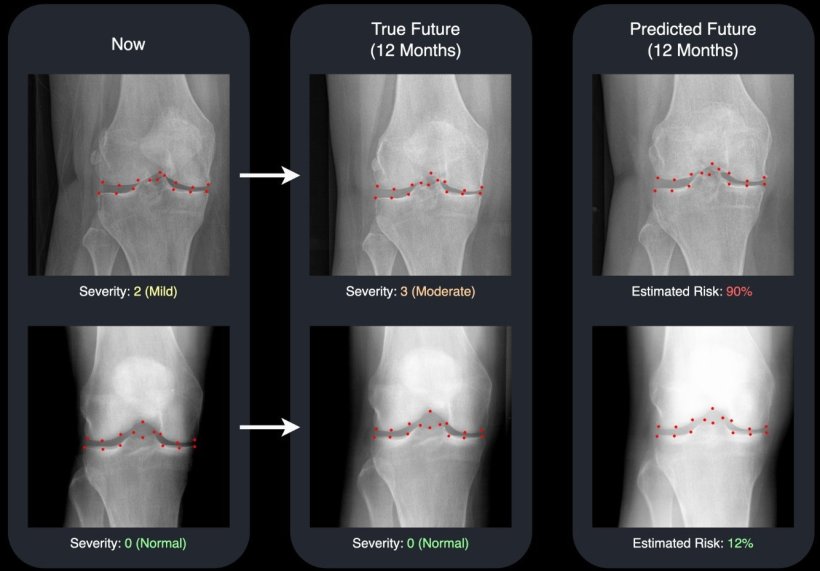Developer Offer
Try ImaginePro API with 50 Free Credits
Build and ship AI-powered visuals with Midjourney, Flux, and more — free credits refresh every month.
New AI Shows Your Knees Future to Fight Arthritis
A groundbreaking new AI system developed by researchers at the University of Surrey is changing how we predict the progression of osteoarthritis. This technology can generate a realistic X-ray image of what a patient's knee might look like in the future, offering a powerful visual forecast of the disease.

A Glimpse into the Future of Knee Health
Osteoarthritis is a degenerative joint disease that impacts over 500 million people globally, making it a primary cause of disability among older adults. The new Surrey-developed AI, detailed in a study for the MICCAI 2025 conference, provides both a future X-ray and a risk score for disease progression. This dual output gives doctors and patients a clear, tangible understanding of how the condition could evolve, empowering them to take proactive measures.
The Technology Behind the Prediction
The system's accuracy and speed are built on an advanced generative AI called a diffusion model. It was trained on one of the largest osteoarthritis datasets in the world, containing nearly 50,000 knee X-rays from almost 5,000 patients. As a result, this AI outperforms comparable tools, operating about nine times faster and in a much more compact form. This efficiency could be a key factor in accelerating its adoption in busy clinical environments.
To ensure transparency and build trust with clinicians, the system also highlights 16 key points within the joint. This shows exactly which areas the AI is monitoring for changes, making its predictions easier to interpret and validate.
A Powerful Motivator for Patients
David Butler, the study's lead from the University of Surrey, emphasizes the human impact of this visual approach.
Seeing the two X-rays side by side – one from today and one for next year – is a powerful motivator. It helps doctors act sooner and gives patients a clearer picture of why sticking to their treatment plan or making lifestyle changes really matters.
Butler believes this technology could be a "turning point" in how medical professionals communicate risk and improve care for osteoarthritis and other conditions.
Building Trust and Looking Ahead
Professor Gustavo Carneiro, also from the University of Surrey, notes that previous AI systems were often slow and provided only opaque risk scores.
Our approach takes a big step forward by generating realistic future X-rays quickly and by pinpointing the areas of the joint most likely to change. That extra visibility helps clinicians identify high-risk patients sooner and personalise their care in ways that were not previously practical.
The potential for this research extends far beyond knee joints. In the future, similar AI tools could be developed to predict lung damage in smokers or track the progression of heart disease. The research team is now actively seeking partnerships to bring this innovative technology into real-world clinical settings. For those interested in the technical details, the full research paper is available on arXiv.
Compare Plans & Pricing
Find the plan that matches your workload and unlock full access to ImaginePro.
| Plan | Price | Highlights |
|---|---|---|
| Standard | $8 / month |
|
| Premium | $20 / month |
|
Need custom terms? Talk to us to tailor credits, rate limits, or deployment options.
View All Pricing Details

